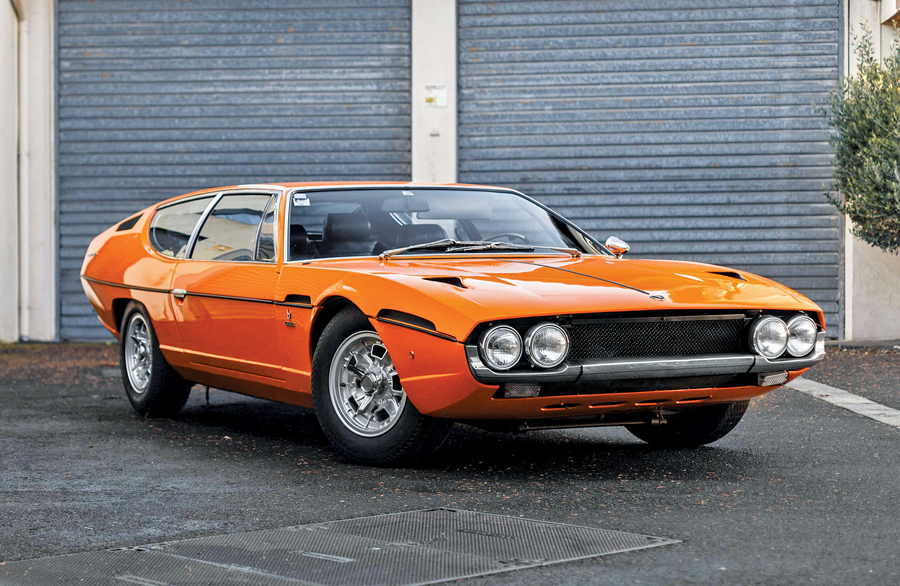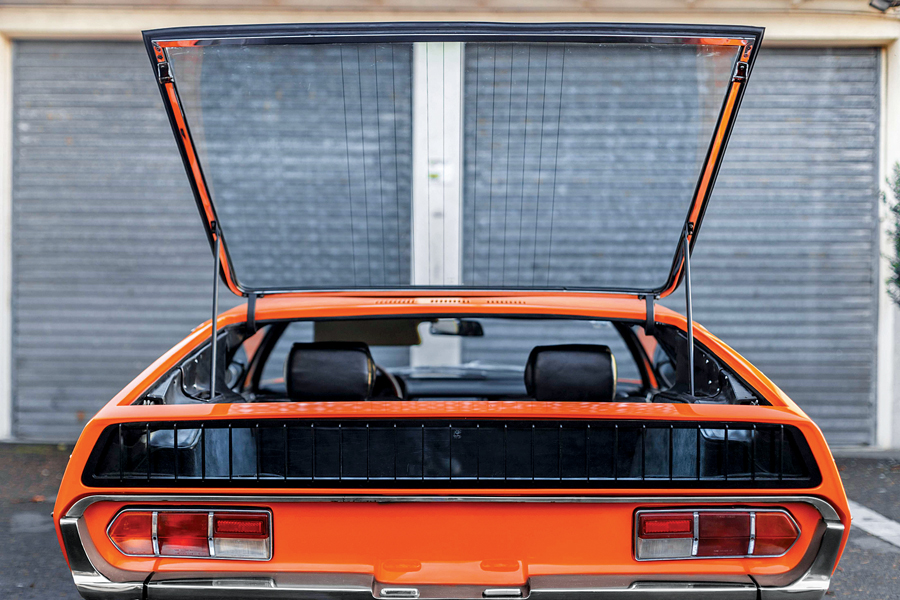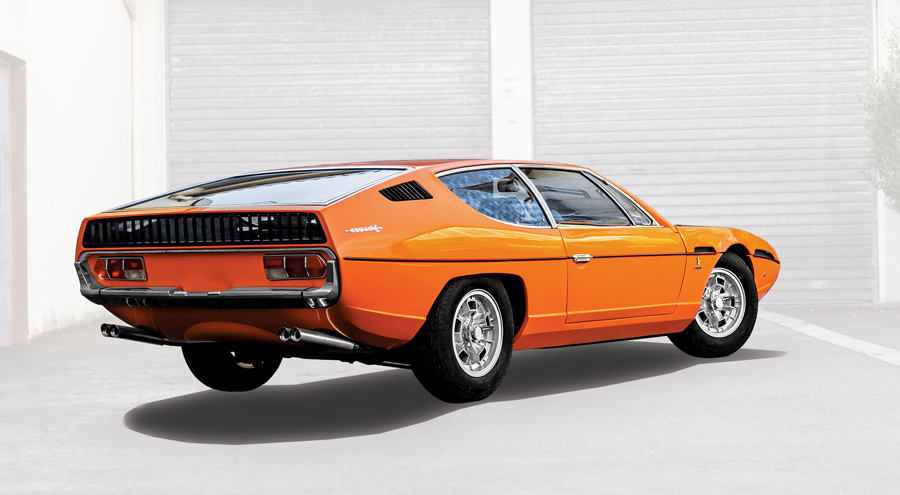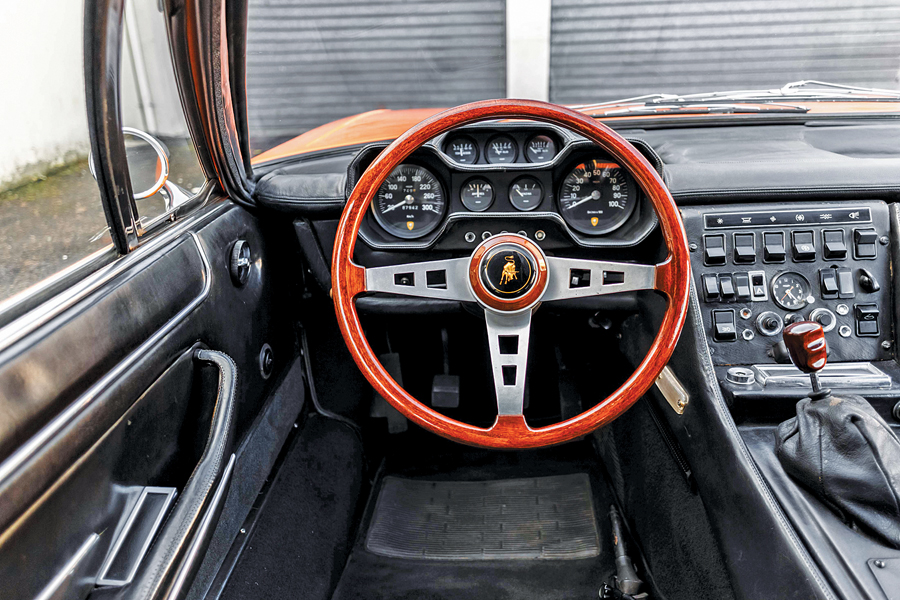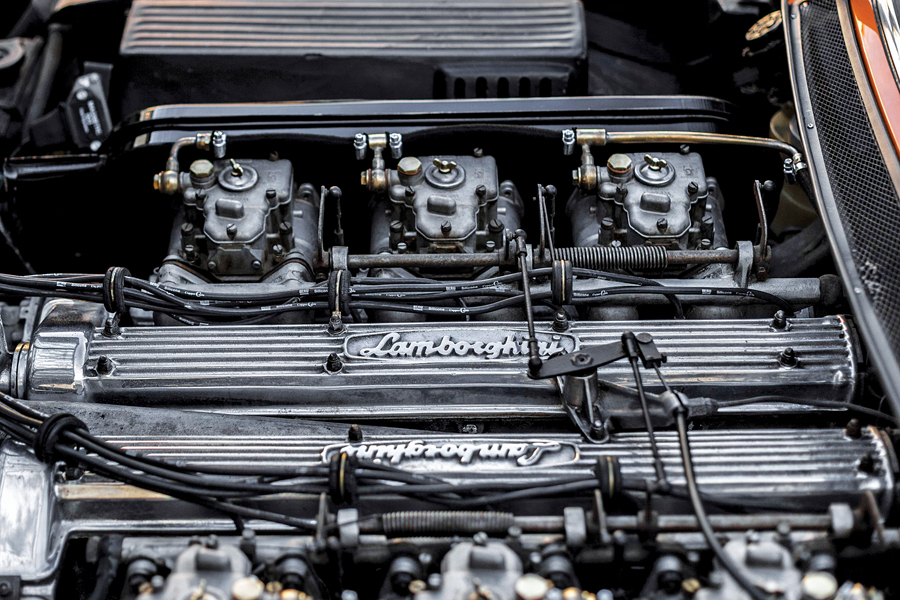SCM Analysis
Detailing
| Vehicle: | 1969 Lamborghini Espada Series I |
| Years Produced: | 1968–78 |
| Number Produced: | 176 (Series I) |
| Original List Price: | $21,000 |
| SCM Valuation: | C |
| Tune Up Cost: | $3,500 |
| Chassis Number Location: | Engine compartment on firewall plate |
| Engine Number Location: | In center of head on top of block |
| Club Info: | International Lamborghini Registry |
| Website: | http://www.lamborghiniregistry.com |
| Alternatives: | 1969 Iso Fidia, 1969 Maserati Quattroporte, 1964 Lagonda Rapide |
| Investment Grade: | C |
This car, Lot 112, sold for $207,738 (€169,264, €1=$1.22), including buyer’s premium, at Artcurial’s Rétromobile auction in Paris, France, on February 9, 2018.
When most people think of high-performance Italian automobiles, fast, capable, dramatic conveyances capable of carrying four adults in comfort don’t spring to mind. Yet the Italians, more than anyone else, have delivered many 4-seat thrills for a family or a quartet of fortunate friends.
A little 4-door history
While the Facel Vega Excellence of the 1950s was certainly the successor to the marvelous Bugatti Type 57 Galibier sedan, the French had given up on the sector by the time the 1960s hit their stride.
Meanwhile, the vastly unappreciated Lagonda Rapide of 1961 provided a new model for truly sporting sedans, and the stunning 1963 Maserati Quattroporte showed the world exactly how marvelous it could be to provide swift transport for a driver and three companions with a great deal of style to accompany the performance.
Enter the spacey Espada
When Iso launched the Fidia in 1967, it quickly upped the ante as the world’s fastest sedan. However, the extraordinary fact that the Espada was the Marzal show car come to life trumped even that. As Lamborghini firmly established itself as the company that created cars that looked as outrageous as they performed, the Espada was a particularly potent calling card. Here was a true 4-seater that not only was as fast as a 2-seater, but was practically as low as a racing car. That is, the Espada looked like a racing car as imagined on an alien planet.
One could easily picture Jane Fonda in her shiniest “Barbarella” mode arriving anywhere with Roger Vadim in an Espada, most probably accompanied by Pygar and Dildano in the back seats. It was that rara avis, a street car that looked as improbable as the show car that inspired it — yet it was completely usable. The Espada was always a car that polarized opinion. You either loved the ultra-exotic form — or thought it looked like a squashed bug. I’ve always loved it.
The Series I Espadas are the most rare, with 176 leaving Sant’Agata Bolognese. Many, myself included, prefer the front and rear grilles of the early cars to the look of the later models. In addition, with their multi-angled instrument panel, delicate details and center spinner-hub wheels, they scream late mid-century fantasy car and deliver visually.
Our subject Espada
In Lamborghini World, an invaluable resource is the International Lamborghini Register. Founder Glen Kohut has done a remarkable job over the decades to carefully maintain a very useful and accurate website. The registry listing for chassis 7063 states that in 2004 it was red with a tan leather interior. This would mean that the catalog description of the “original black interior” might be questionable; however, the catalog images show a nicely lived-in environment with slightly baggy leather and dulled brightwork. It’s quite possible that someone submitted an incorrect photo for this listing.
The vibrant orange that it currently wears is very period Lamborghini, but in my opinion the Espada looks best in conservative colors. The shape is exotic enough that you don’t need to paint the lily. And especially given its roots in the white Marzal, silver is an ideal color for an Espada. I would much prefer this car in that original color than the one in which it was refinished.
This Espada sold well, just past the low estimate of €150,000. Long gone are the days when Espadas were sold for the price of their engines — usually to keep a 400GT 2+2 on the road. Very few spent the money required to restore or even maintain one properly, and they lagged far behind the rapidly increasing values of the 350GT, 400GT and 400GT 2+2 models.
But this is another example for me of the continued stratification of the current market.
Artcurial sold Espada chassis 7189 at last year’s Rétromobile sale for €268,200 ($285,070). This sale is even more impressive when you factor in the exchange rate, which in February 2017 was a much more favorable €1=$1.06. Last year’s sale was nearly €100k, about $78k higher than this one. The 2017 car was not a color change, and it was freshly and completely restored.
These cars are a delight to drive, and for turning heads when you arrive, there are few less-expensive ways to do it. That is, for now — the day of the Espada has not yet truly arrived, but I’m pretty sure we are just a few steps away from a truly great example coming forward to shock the world. ♦
(Introductory description courtesy of Artcurial.)
